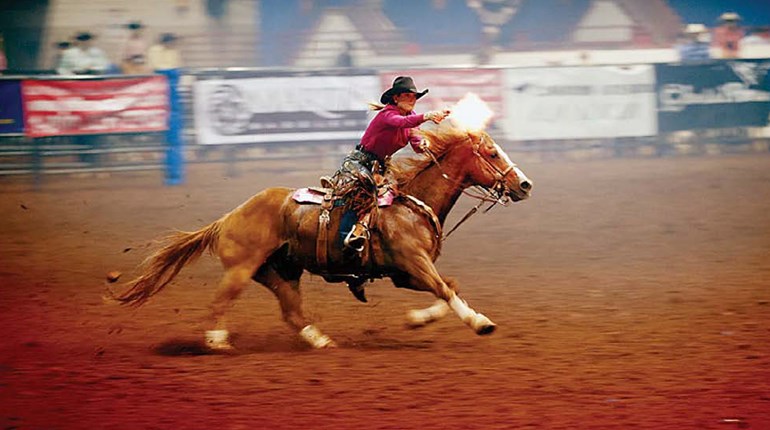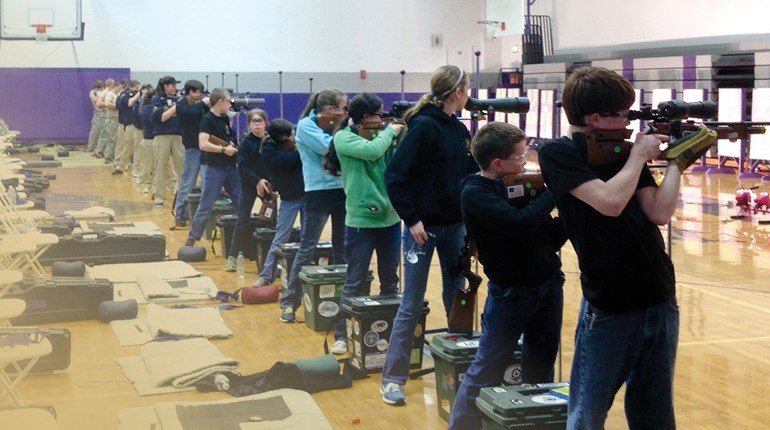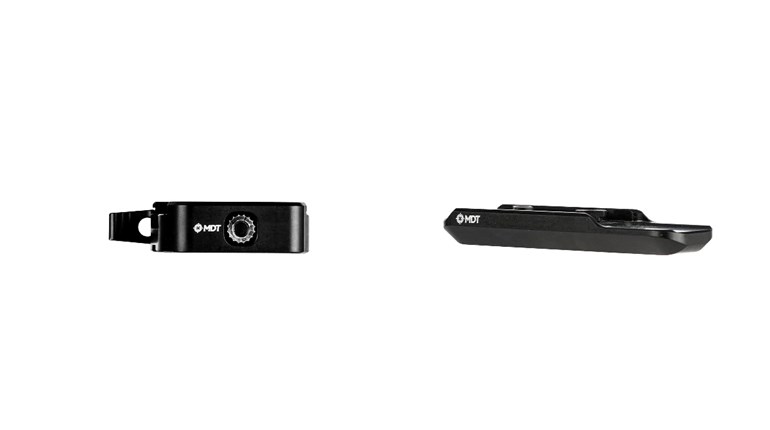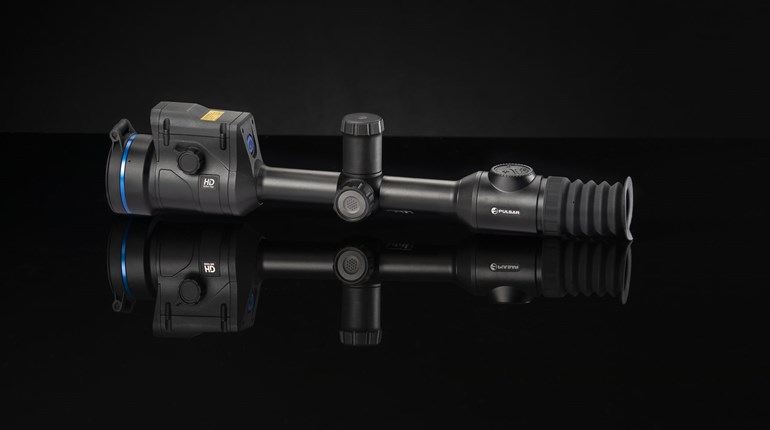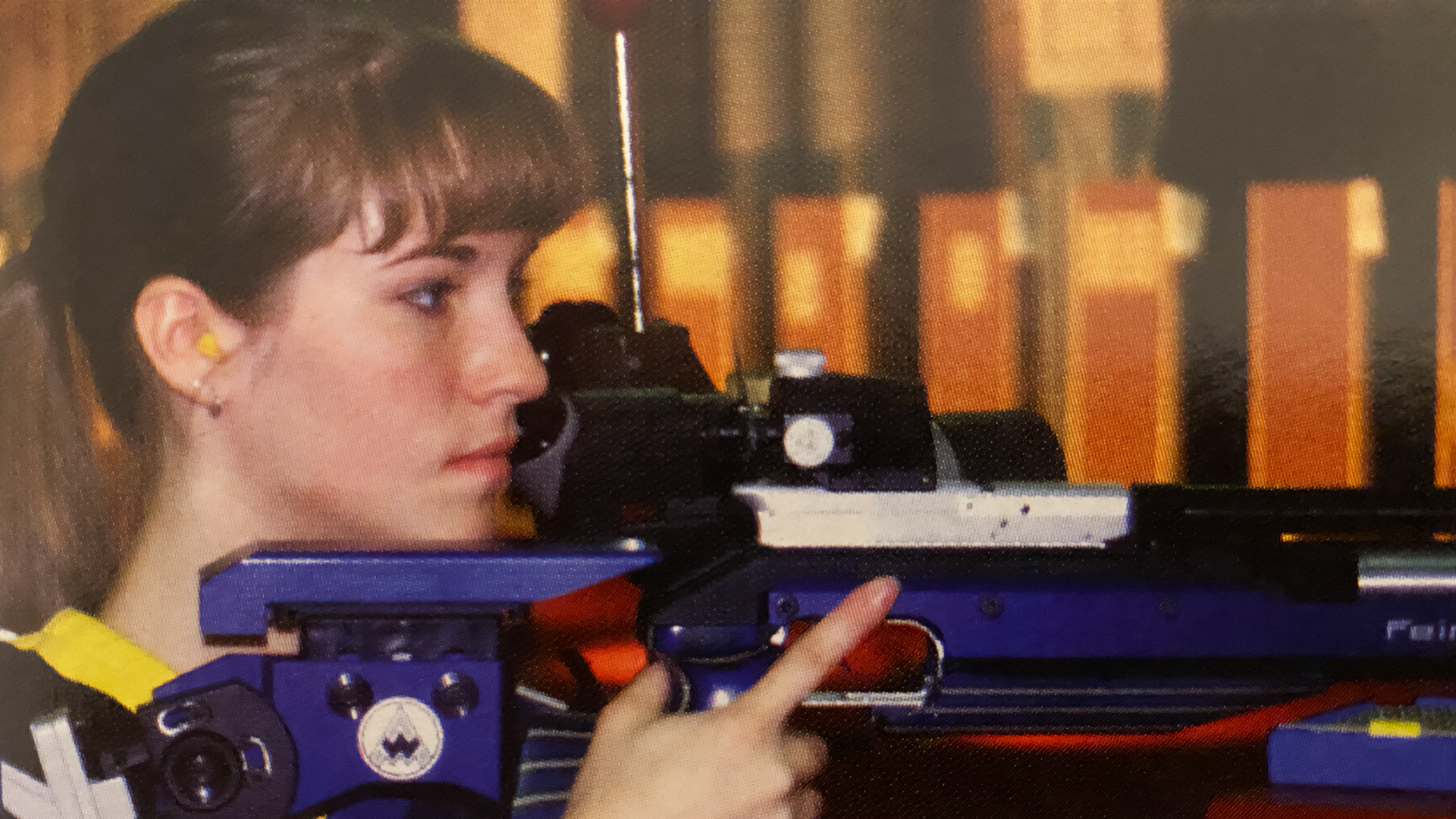
From the vault: A match report from the 2003 NRA Junior Air Gun Championship written by Randall F. Mull. As published in the January 2004 issue of Shooting Sports USA.
Bringing Out the Best: 2003 NRA Junior Air Gun Championship
Story and Photos by Randall F. Mull
The city of Wilmington, North Carolina, is known as the childhood home of Michael Jordan, arguable the most famous athletes of the 20th century. However, from July 10-13, 2003, that city was known for a different breed of athlete—the junior air gun shooter—when the third annual NRA National Junior Air Gun Team Championship and Training Summit was held in Wilmington’s Coast Line Convention Center. A total of 45 teams (15 sporter, 21 precision and nine pistol) converged on the historic 19th-century train station that has been renovated to accommodate events like this tournament and the 200 young shooters who came out to participate.
And though the sports of basketball and air gun are vastly different, the method of winning is actually similar: Make an object go into the center of a circle and score more points than the opposing team. After taking a good look at the youngsters who compete in the tournament, it is clear while Michael Jordan may be on their list of idols, they certainly look up as much to shooters such as G. David Tubb, pistol-shooting great Brian Zins and others who find shooting fame at the National Matches.
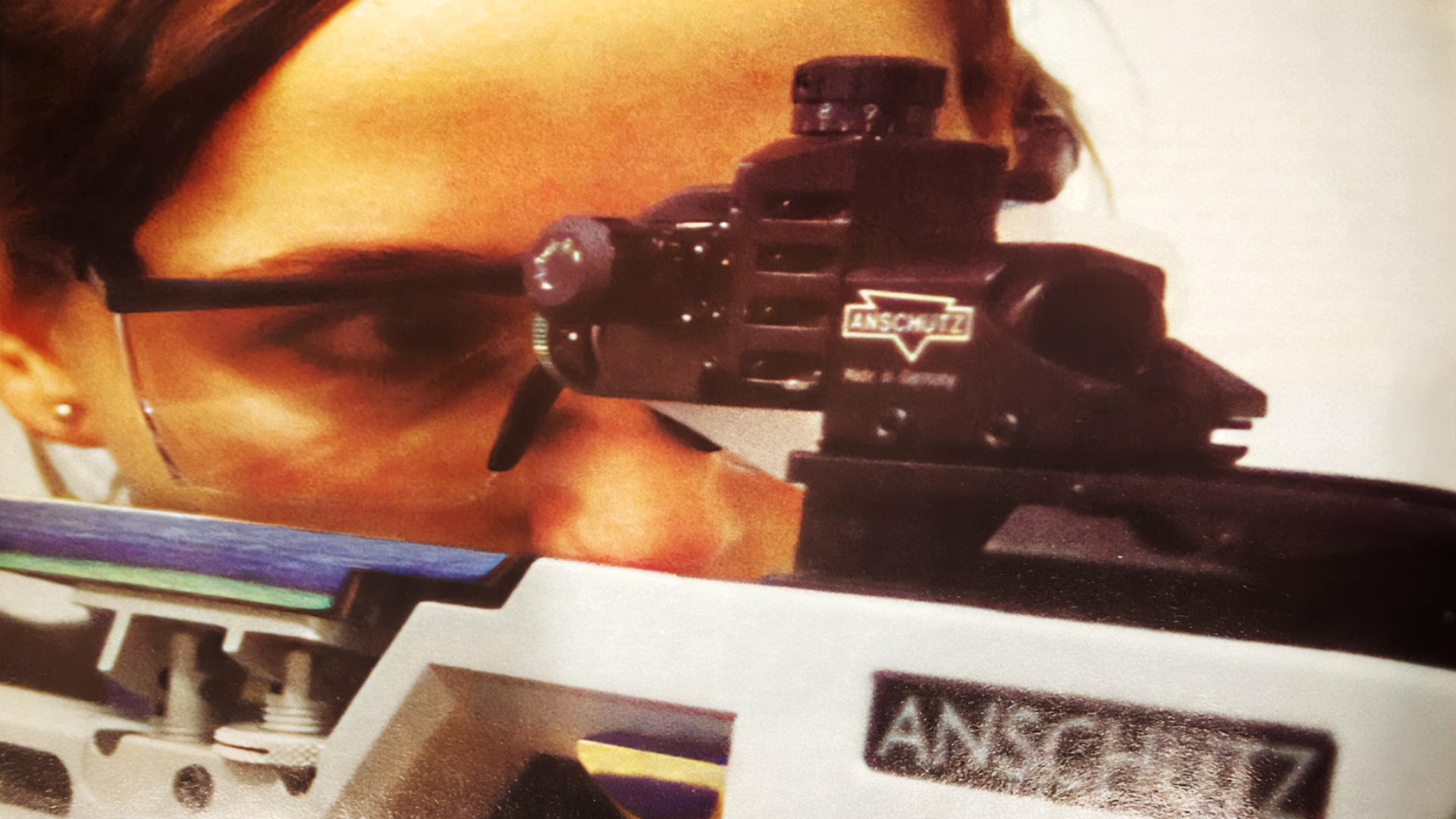
In addition to competition, the participants were treated to a round of seminars on the shooting sports, shooting history and other opportunities for young shooters to compete on national and international levels. The adults who accompanied the team members as sponsors and coaches attended the same round of training sessions. The object of these seminars is to teach both shooters and coaches alike the advantages that the shooting sports have to offer. Because air guns are often a gateway to many other shooting disciplines, and the kind of shooting instrument that many shooters cut their teeth on, these classes are important. They display to shooters not only all air guns can offer, but what other shooting disciplines can offer as well. The seminars teach different shooting techniques such as proper breathing and concentration. Students and coaches are also made aware of other opportunities that the shooting sports can provide, such as an education at a major university through one of the many shooting scholarships available.
The seminars also let the coaches and adults know how they can go about starting and maintaining their own shooting programs. If money is not available, the training shows the coaches how funds and additional resources can be found. This is a vital component of the seminars because it helps ensure the future of the shooting sports for tomorrow’s youth.
Taking the top spot at the 2003 event were the youngsters representing the Pennsylvania Rifle and Pistol Association. The team, comprised of Leslie Angeli, Matthew Hamilton, Thomas Santelli and Justin Sparks, beat the second-place Oregon team by 18 points, with a score of 4645. Team standout Leslie Angeli from Hershey, Pennsylvania, kept cool under the pressure. “Even though the competition is very exciting, shooting has taught me to keep my emotions under control, and that’s helped in other areas as well, like school and my cross-country running,” Angeli said.
The Oregon State Shooting Association team came in second place with a score of 4627. Taking bronze in the precision competition was the Alabama State Rifle and Pistol Association, with a score of 4619.
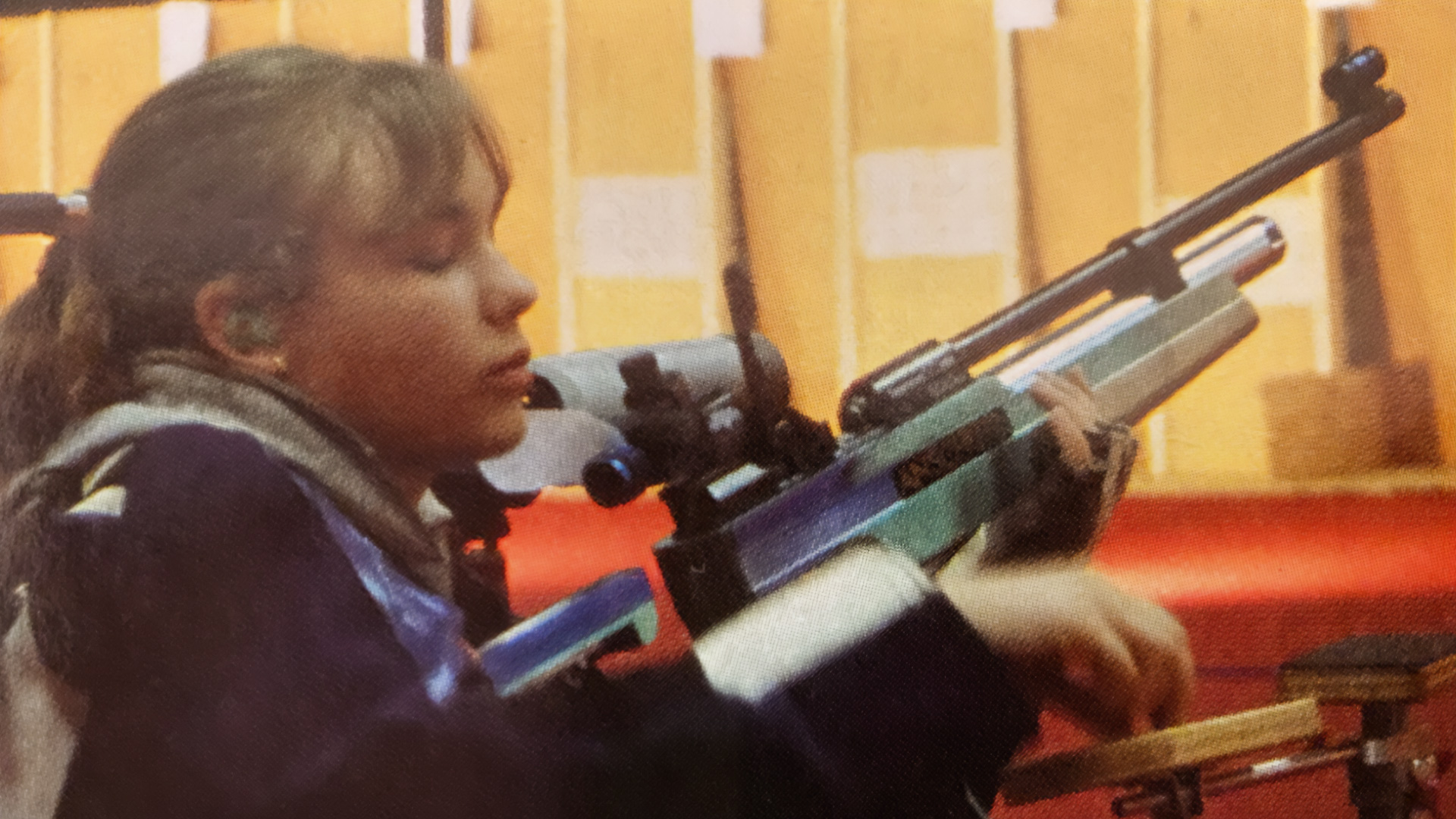
In individual precision competition, Kristina Fehlings, 18, from the Virginia Shooting Sports Association, won first place with a score of 1172, after finishing only 10th on the first day of competition. This was an obstacle Fehlings didn’t know she could overcome. “I’m really surprised at winning,” she said. “I found the training classes here at the competition very inspiring, and they definitely helped me to win.” Fehlings is no stranger to success, however. Her precision team won the 2002 competition in Richmond, Virginia, and she will also be attending the University of Nebraska later in 2003 with a full scholarship to participate on the school’s shooting team. Fehlings, who has participated in shooting for more than six years, feels her hard work and dedication to the shooting sports has finally paid off. “You can do anything as long as you strive for success and work hard,” she said.
In sporter shooting competition, it can be assumed reasonably that coach Mike Jochum and his Nebraska Shooting Sports Association team would be in the running for first place. That first-place goal was achieved this year by his team—comprised of Nathan Jochum, Micaela Jochum, Jace Bures and Sarah Broeker—with a score of 4320. It can be said that wherever there is a sporter competition, there is a Jochum. This is something of which Coach Jochum is very proud. “Being national runner-up champions twice possibly gives you a little extra incentive to try and reach the next level; to be the top team in the nation,” he said. “But you must approach it like all the other matches. You hope each shooter maintains their average or, better yet, can beat their own personal best.” Taking the silver in sporter competition was the Area 5 Navy JROTC, with a score of 4213. Placing third was the team of Sectional Winner-Lowell High School, with its score of 4195.
In individual sporter competition, Jace Bures, 15, of the Nebraska Shooting Sports Association, won the Individual Sporter title with a score of 1089. Bures seemed mildly surprised at winning the competition in 2003, which usually goes to slightly older competitors. Bures, who also enjoys hunting and fishing, is a young man of few words. When asked to comment on his win, he said simply, “It feels really good to do so well after shooting for only three years.” Fellow teammate Nathan Jochum came in only one point behind, for a second-place finish of 1088. Rounding out third place was Blane Burnett of the League of Kentucky Sportsmen, with a score of 1083.
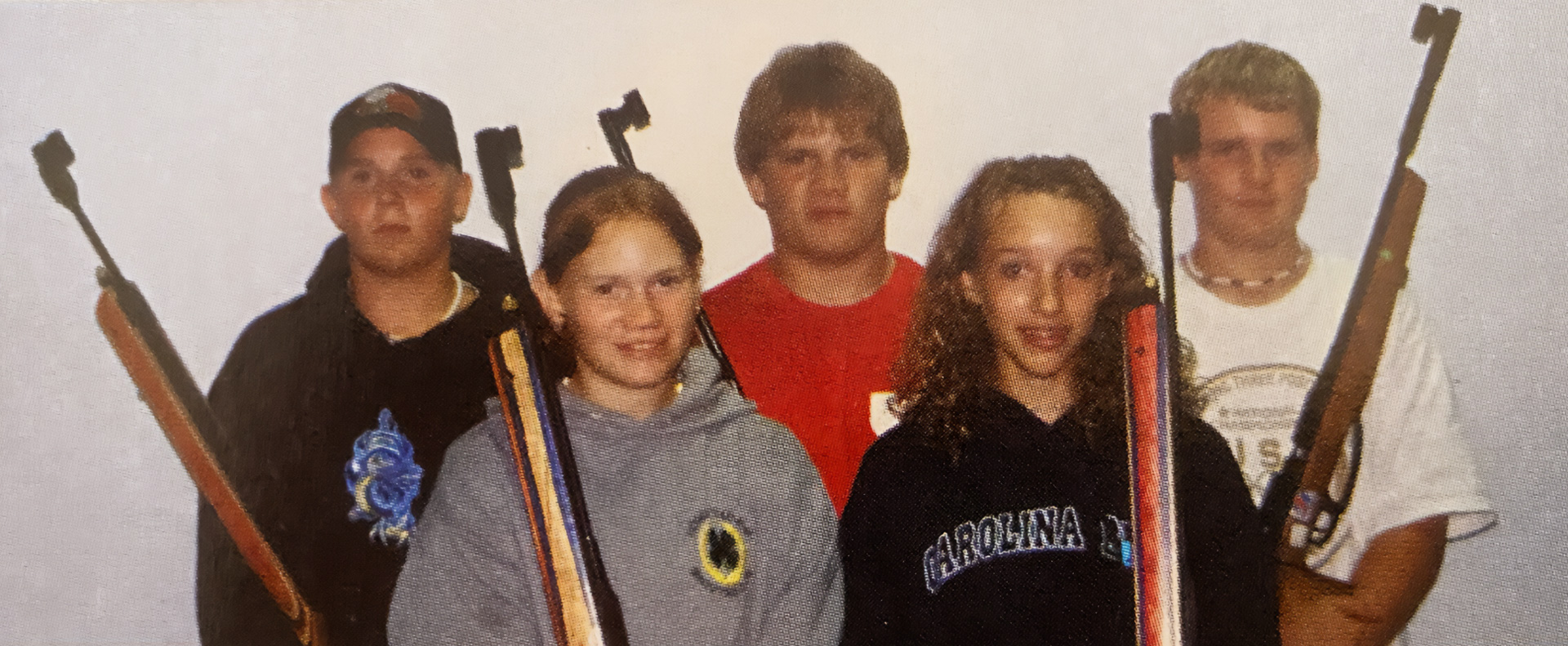
Added to the competition in 2003 was an Air Pistol Championship. NRA Competitive Shooting Coordinator John Venskoske was very excited at the prospect of being able to add pistol competition to the 2003 event. “Since there are very few activities for juniors in pistol, we felt that by adding air pistol, it would help develop more pistol programs at the state and local level throughout the country,” Venskoske explained. “With numerous universities and colleges looking for experienced pistol shooters for their teams, it was just natural to implement the program.”
Bringing home the gold medal in pistol competition with a score 74 points greater than its nearest competition was the Kansas State Rifle Association, comprised of Cody Owsley, S. Anthony Lutz and Logan Benteman, with 2074. Taking silver was the Montana Rifle and Pistol Association with a score of 2000, and finishing third was the Pennsylvania Rifle and Pistol Association with a score of 1979.
The Kansas State Rifle Association also had the individual winner in pistol competition with its young shooter Cody Owsley, who scored a 734 in competition. Owsley, who is also an avid RC car-racing enthusiast, has only been shooting pistol for the last year-and-a-half. Winning first place was a major achievement for the young shooter. “I had a lot of fun competing in the match. It was only the second national match that I have been to, so winning it made it even more exciting,” he said. “I look forward to coming back next year. Even if I do not win, it will still be fun.” Taking home the second-place trophy was Charles Normington of the GOAL team from Massachusetts, while James Knight, a member of the Pennsylvania Rifle and Pistol Association secured the bronze medal.
A major part of the competition every year is the closeness and camaraderie among the participants and their coaches and relatives. Nowhere is this more evident than at the “barter bar,” where each team brings pins, medallions and other such goodies that represent their state. Here the teams trade their keepsakes to help them remember each other and the event. Mike Jochum summed up perfectly this sense of family, “The sport of air rifle shooting does get the whole family involved. It’s a sport you see Mom or Dad working very close with their child, whether working on equipment together, checking scores, evaluating shot groupings, or providing comfort after a less-than-average score.” The longer you attend the matches, Jochum said, especially with younger kids, the more you get to see the inner workings between the parents and coaches. “The successes or failures are shared by both, memories that will last them their lifetimes.”
It is easy to see by the smiling faces of both parents and children alike that the 2003 NRA Air Gun Team Championships were a success in many ways. Not only do the young people learn to work together as teammates, they also learn more about themselves and their sport. With this in mind, it is clear that everyone finishes in first place.













